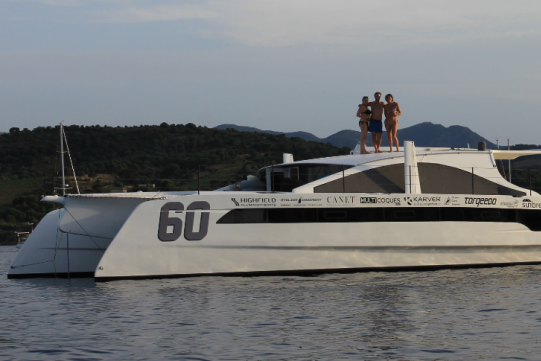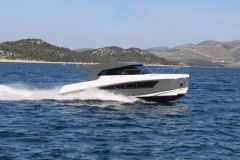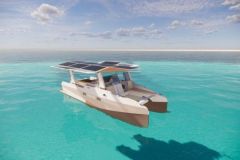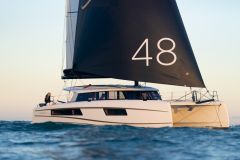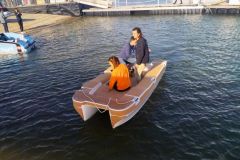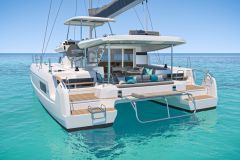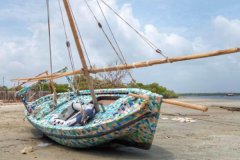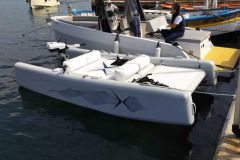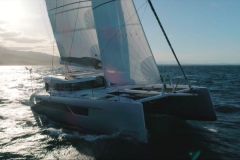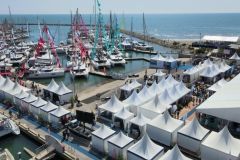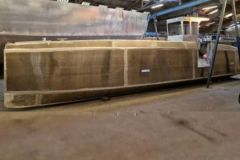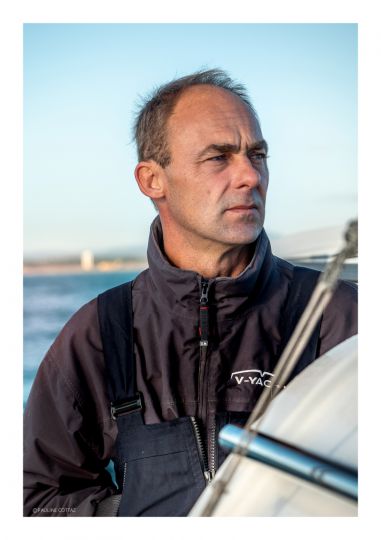
Passionate about technology
Our man is not an oddball: this architect worked at Catana before managing Tenderlift, a company specialising in the design and manufacture of hydraulic nautical equipment. Maxence Valdelievre is now moving on to practical work in all directions; from a Class 6 base built by the O Yachts shipyard, there is room for innovation for this now V-60!
The Class 6, light, innovative and fast
This catamaran is already original at the base with thin stepped hulls and above all its central longitudinal beam - a real third raised hull, it contributes to the general stiffness of the platform and good seaworthiness at the end of the wildest surfs. One Cat is its name, was therefore prepared in Canet-en-Roussillon with the aim of exploring and validating new concepts.
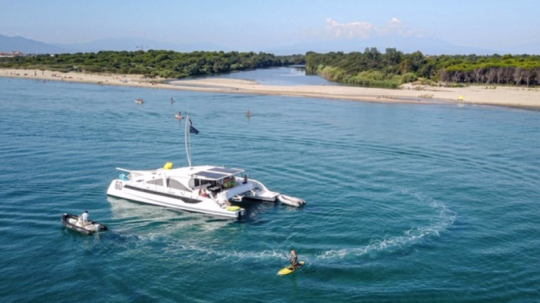
A single combustion engine..
Usually, a catamaran is propelled by two engines, usually thermal. They represent a significant budget - 5 to 10% of the total cost of a catamaran and about the same on the move. Maxence therefore looked for a new and particularly original way: he installed a single high-displacement, low-revolution combustion engine with a large propeller. Cruising speed: 9 knots at 1800 rpm, peak at 12 knots at 2400 rpm. It is with this configuration that One Cat joined Canet from Latvia.
...and an electric second
A 10 kW Torqueedo power unit coupled to a 2 kW Atomic lithium battery in 48 volts, 1 kW solar panels and a 48 volt 2 kW alternator coupled to the main engine were then mounted. One Cat can progress at 2 knots on a calm and sunny day without consuming its battery. The electric motor also acts as a hydrogenerator under sail. The advantages: a weight saving of 250 kg and 12,000 euros. Not to mention reduced maintenance costs and space savings. On the other hand, for maneuvers, One Cat can only rely on a "real" engine.
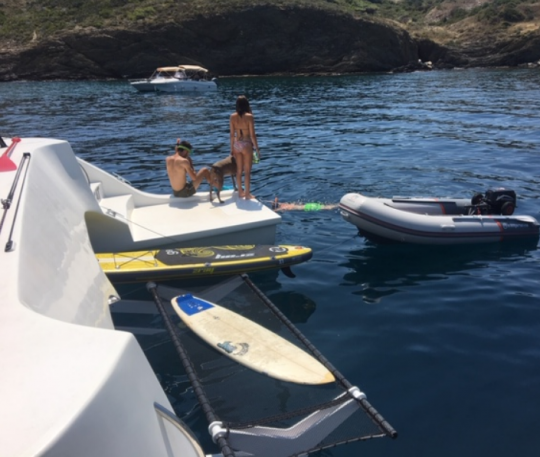
Other innovations
Other new features developed on board One Cat: a Y-Lift platform entirely made of carbon - only 50 kg -, retractable rudders, floating daggerboards, carbon chainplates. First, the V-60 will not be mated. But a full hydraulic system with load sensors - furling boom, genoa furling system, sheets etc. - will be validated later.
An original program
One Cat has been operated for three months by a scientific mission and could soon serve as a companion boat for Doris Wetzel, the first woman to have crossed the Mediterranean in kitesurfing. The next challenge for the yachtswoman is indeed to cross the Atlantic in 2021. Eventually, the V-60 will be operated by Maxence to promote the systems developed by his company V-Yacht. The catamaran will also be an itinerant work platform. On board, a hydraulic workshop, a welding station and a professional sewing machine. The idea is to be able to intervene directly in the anchorage areas in the Mediterranean to start with, in the West Indies later.
